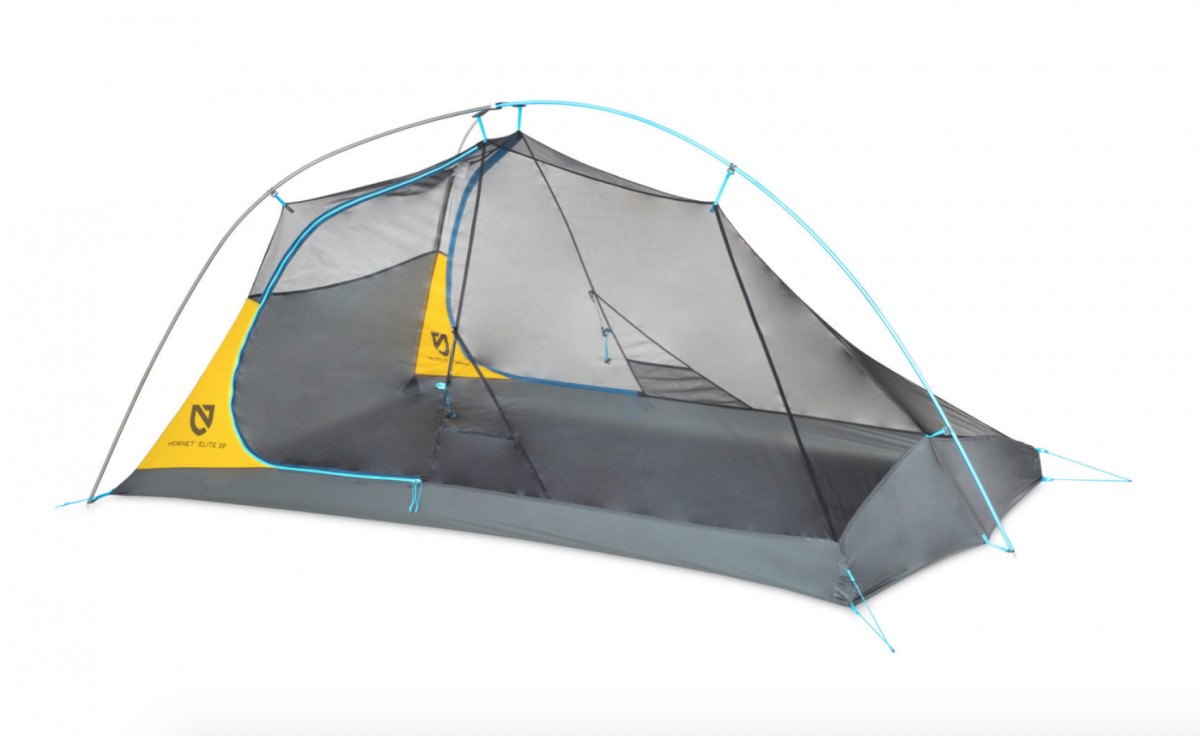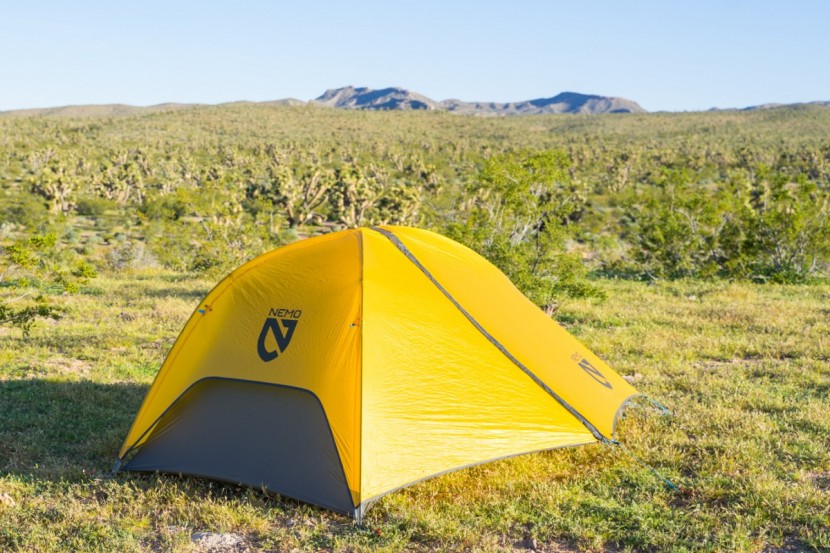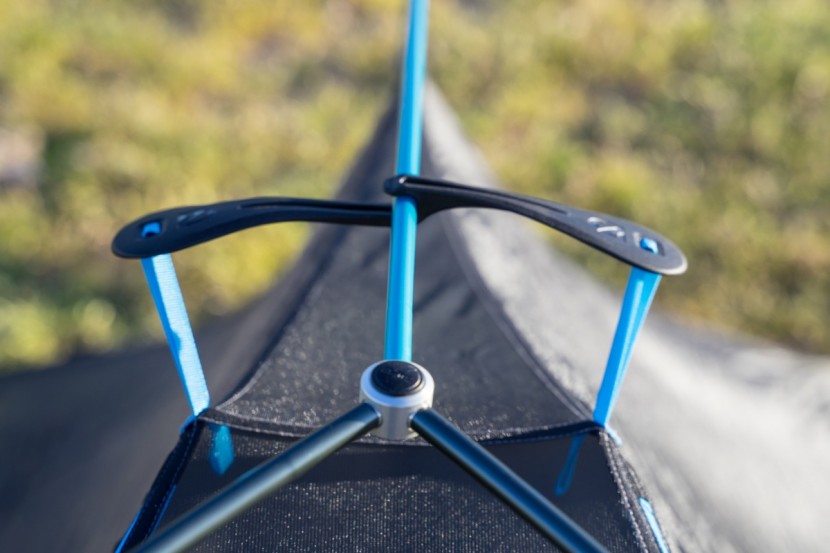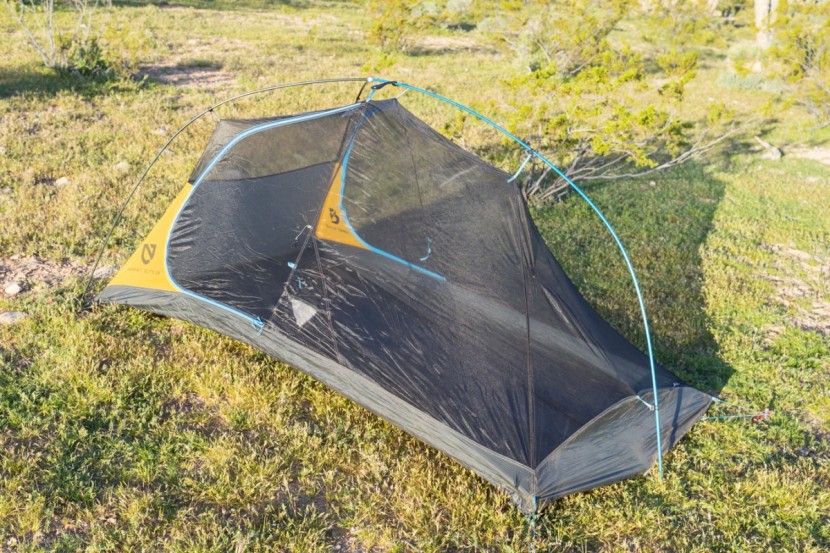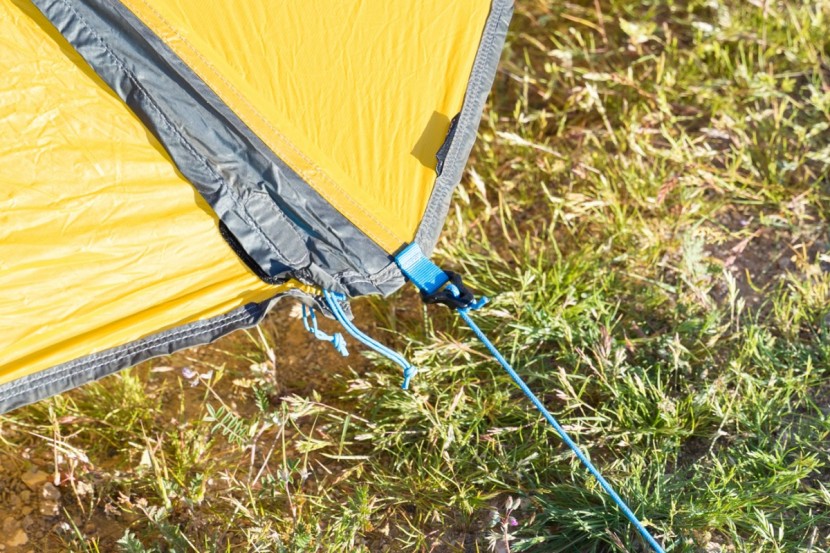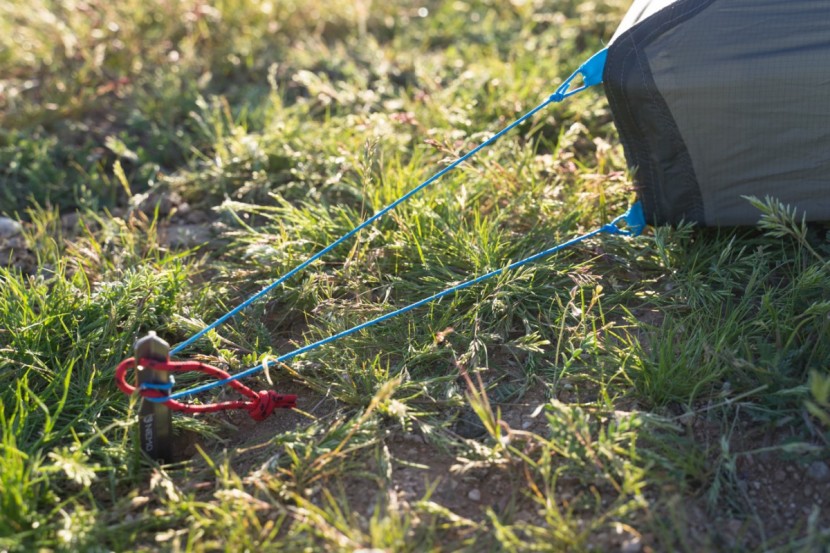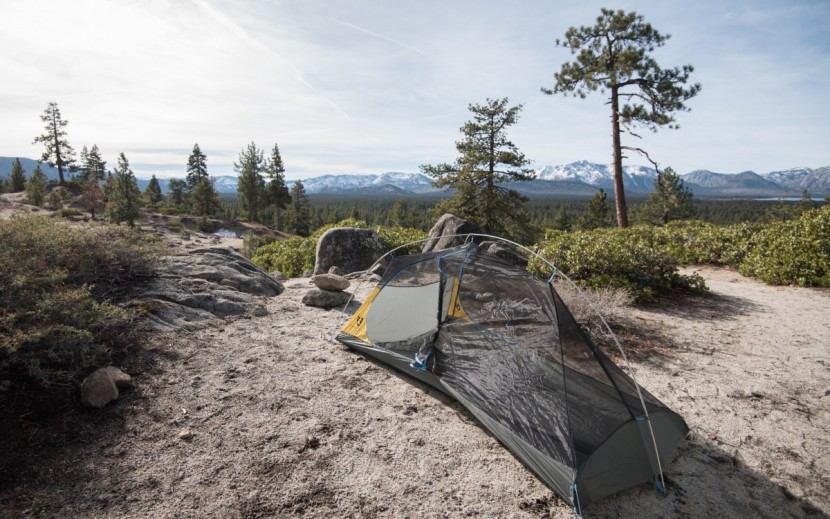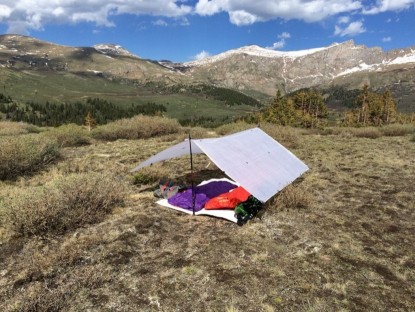NEMO Hornet Elite Review
Our Verdict
Our Analysis and Test Results
The NEMO Hornet Elite provides all the comforts of a sem-freestanding tent set-up, earning our accolades for its easy set-up and lightweight design. While you have to skimp a little on interior space, the double vestibule design makes it easy to cook food and hit the trail with confidence.
Performance Comparison
Livability
To make this tent as light as it is, Nemo had to sacrifice some interior space. If you are sharing the tent with someone else, you should be prepared to cozy up to them.
Nemo did an admirable job maximizing the livable space by adding additional guy-out lines near each door, which increase the lateral area at shoulder level. However, its maximum interior height of 37" is a few inches lower than many similar 2P tents and 3 inches lower than the regular Hornet. Paired with a floor space of 85"x51", two average-sized adults would struggle to sit up cross-legged at the same time. The floor is just the right width for two inflatable Thermarests to nestle snugly side-by-side.
The saving grace of this tent is its two side doors. It is supremely easy to roll in and out without disturbing the other person. At six square feet, each vestibule offers enough room for boots and a modestly-sized pack to stay out of the tent and out of the rain. Nemo opted for a vertical fly zipper, as opposed to the arc-shaped or semi-circular ones found on most tents, and testers found that it got caught less often. The Hornet Elite gives you two doors and a great view from each, which also helps with ventilation.
Each side has a mesh pocket that can accommodate a phone, small book, or notepad. One understated feature is the overhead canopy pocket, made from opaque, white ripstop nylon. It softens harsh LED headlamps and allows the tent to illuminate at just the right brightness. The tent itself is a neutral grey with yellow highlights, but the fly is what Nemo calls elite yellow, which makes it decidedly less stealthy than most other backpacking tents or UL shelters.
Weight
This area is where the Hornet Elite shines. At a scant minimum weight of 1 pound 11 ounces, it's exceptionally light for a double wall, dedicated pole tent. It even garners consideration among floorless and other UL shelters that utilize trekking poles for setup. It has a packaged weight of 2 pounds, 1 ounce, and packs down to 19"x5". Ditch the tent bag and included extra guy line, and you and a backpacking companion can boast a shelter load of just one pound each; very few other tents with netting and floor are lighter. The ones that are, like the Editors' Choice Duplex, require a more time-consuming setup process with trekking poles.
[cahrtid=Weight with all components]
Weather Resistance
This tent stands up surprisingly well to the elements. At first blush, the no-see-um mesh walls would leave its occupants susceptible to splashback in heavy rain. However, it makes sure to run the fly almost to the ground, minimizing the amount of space for water to find its way inside the shelter.
With two people, the tight dimensions invariably result in one or both sleepers pressed up against the mesh walls. However, the tent walls have enough clearance from the fly to keep sleepers dry, even in a storm. For those inclined to bring the tent bag along on their adventures, there is a nifty feature that allows you to cinch the bag at its midsection to separate a wet fly from a presumably drier tent.
We slept through wind storms with gusts up to 30mph. At 15mph, the tent held up great; at 30mph, the tent starts to bend over without using the extra guy lines. The tent comes with an extra cord for this purpose, but you will need to buy extra stakes or use rocks. On a particularly windy night when we neglected to use the additional guy lines, the pole slipped out of the fly bar, flattening the whole tent, where the non-elite version that uses two fly bars remained upright.
Adaptability
This tent's primary limitation is its interior dimensions. If you are close with your traveling companion, though, you may choose to see the space as 'cozy.'
Testing also showed that the tent does not ventilate particularly well. The underside of the fly collects a fair amount of condensation. However, the relatively steep walls allow moisture to run down to the ground, instead of falling back on sleepers.
Though not necessarily a limitation, Nemo again prioritized weight savings by choosing not to branch the pole at the foot as well as at the head to make the Hornet Elite fully freestanding.
Ease of Set-Up
The Hornet Elite offers a straightforward, fast assembly, even for one person.
It utilizes a single DAC 8.7mm Featherlite NFL pole that branches at the head-end corners and requires two stakes at the foot for full-setup. Its minimalist design makes pitching the tent intuitive. There are surprisingly few tent-to-pole hooks, which is a significant advantage if you are trying to pitch it quickly in cold or wet weather.
Value
This Top Pick is a considerable investment over comparable 2P tents. It's a value purchase for long-distance hikers or weekend peak baggers who prioritize a lightweight pack and speed. If you and your hiking buddy need a little more space for a little less money, the non-Elite version of the Hornet 2P is just marginally heavier and costs less.
Conclusion
The Hornet Elite 2P is the lightest tent available for those who don't want to go to a tarp made by a niche manufacturer. For car campers, casual weekend backpackers, or cyclists, there are plenty of less expensive, roomier options out there.


